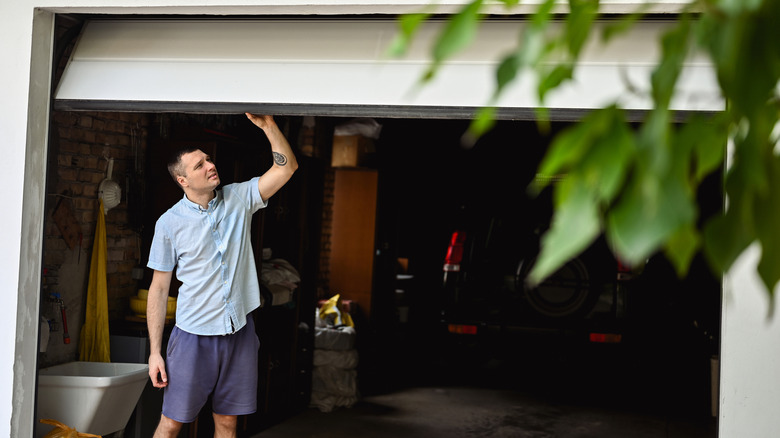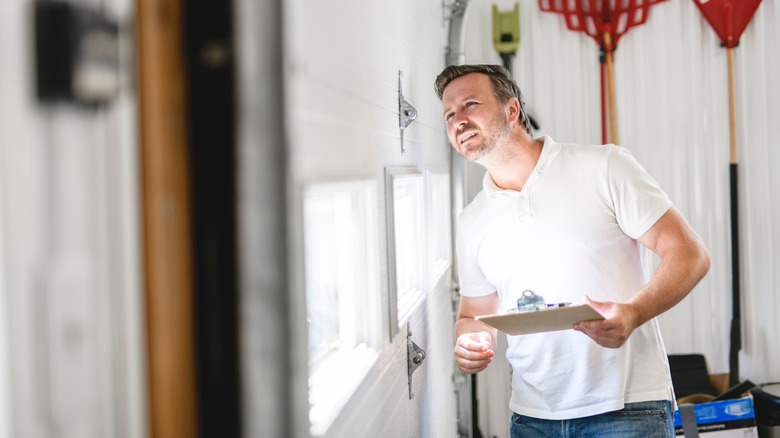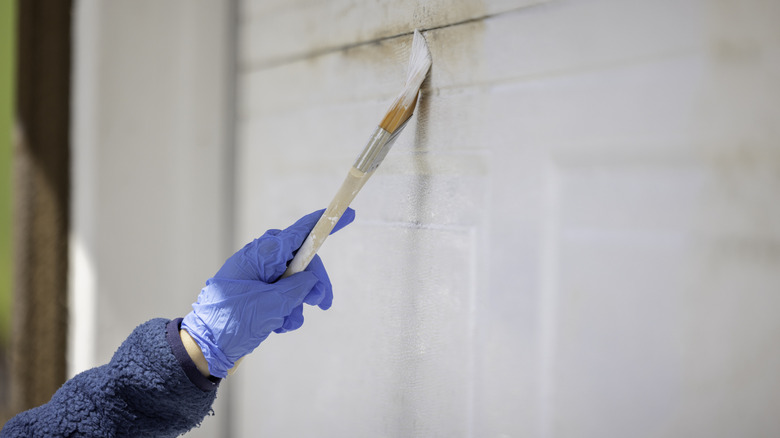The Risk You're Taking By Not Repairing Cracked Garage Door Paneling
We may receive a commission on purchases made from links.
Front doors usually get all the love, but your garage door is just as important. If you have an attached garage with a front-facing door, it adds a lot to the appeal of your house, as that's the first thing people will see when pulling up into the driveway. Because of this, it can be annoying when you notice cracks in your garage door paneling. Not only do these cracks negatively impact your home's aesthetics, but also your temperature control and property value. They also increase the risk of pests invading your home. Bugs like silverfish, ants, and termites could easily squeeze through tiny gaps in your panel. When left untreated, these small cracks will expand due to frequent use. And bigger gaps equals bigger pests. It's fairly easy for an enlarged crack in your garage door panel to become an entry point for mice into your home. Other rodents like squirrels and rats can also find their way in.
If you're wondering how those cracks appear in the first place, one reason is temperature change. Materials can expand and contract when temperatures suddenly increase and decrease, which can lead to cracks. Physical impact from a vehicle or heavy object could also cause them. Old age is another reason. Garage doors last for 15 to 30 years, so if your door is about this age, you may start to see it deteriorate. Finally, poor maintenance can cause cracks, so it's important to be aware of the important steps to maintaining your garage door.
Repair or replace: The age-old dilemma
If you've noticed these cracks on your garage door, then you might be wondering what step to take next. Should you try to patch it, or simply go for a total panel replacement? Well, it depends on a few things. The first is the material of your door. Cracks in wooden garage doors can be easily fixed with fillers, but vinyl or metal doors will be much more difficult and replacements are usually recommended. Next is the extent of the damage. If the crack is small, you'll probably be fine with a repair, but go for a total replacement if the damage is extensive. Also, consider the age of your garage door. If the cracks are because of old age, a repair or single panel replacement would only be a temporary solution, as it'll likely continue to develop cracks. Plus, the replacement panel will likely stand out from the older, faded ones, affecting the overall design of your home. In this case, changing the entire door would be a good idea.
Finally, check your budget. No matter how much a garage door repair will cost, a replacement will likely cost more. However, don't just assume. It's always best to reach out to a professional to guide you on what decision to make and provide cost comparisons between a repair and replacement.
Guide to fixing a cracked garage door
If you're confident in your DIY skills, then you could consider fixing small cracks in your garage door yourself. For wooden doors, you'll need a wood filler, like the J-B Weld Kwikwood Epoxy Putty, which great for filling cracks. Start by cleaning the damaged area with soap and water. The aim here is to remove any dirt or peeling paint in the area. Once it's dried, apply the filler to the crack as smoothly as possible. When the filler dries, sand the area until it is smooth, then paint over it to blend in with the door. If you can't find matching paint, you may have to repaint the entire garage door. Ensure you freshen up on the mistakes everyone makes when painting garage doors to avoid them.
For steel garage doors, welding is not an option because of how thin the metal typically is. You can install a strut on the panel to reinforce the crack from inside, keeping it from spreading. However, you'd still be able to see the crack. Also, you'd likely need larger springs because the strut will increase your garage door's weight. This repair can be difficult to DIY, so it's best to call the pros. Some suggest filling cracks in vinyl door paneling with spray foam, but most experts advise against this as vinyl expands due to temperature changes and any filler or foam used will likely fall out. This type of garage door panel should simply be replaced when cracks appear.


